VOL.194 JULY 2024
JAPANESE SMALL AND MEDIUM ENTERPRISES LEADING THE WORLD
Heat Resistant Barcode Labels Enable Management of High-Temperature Production Processes
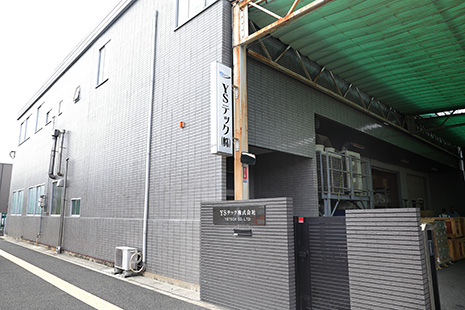
Photo: ISHIZAWA Yoji
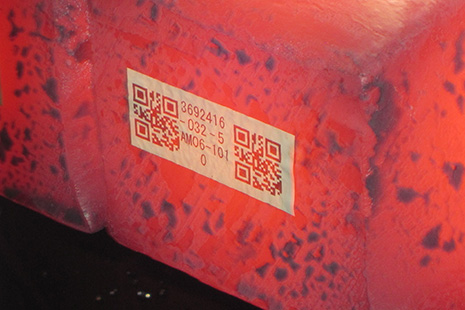
Photo: YStech Co.,Ltd.
HEATPROOF labels provide manufacturers with the ability to use barcodes and other labeling to control production processes that reach temperatures as high as 1,000°C. These products, which boast a 100% share of the global market for labels that can be applied directly to extremely hot materials, are currently in use in 36 countries around the world.
Today it is common for factories around the world manufacturing various products to use barcodes and other labelling methods(refer to the column)to help manage the production process. Despite the need for similar methods to help manage metal and ceramic manufacturing, using ordinary barcode labels has not been feasible in these situations due to the extremely high temperatures involved in manufacturing and processing. HEATPROOF heat resistant barcode labels from YStech Co., Ltd. solve this problem. We spoke with OKAYAMA Taichi, Director and Sales Manager, about these groundbreaking labels.
“The cause of developing this product came about 20 years ago when an aluminum smelter in Canada asked us for a label that could be applied directly to aluminum heated to 500°C. No such label existed at the time, so we took up the challenge of developing one. We repeated trial after trial, selecting new base and ink materials, formulating and processing each of these materials. At the time, there was no equipment capable of automatically applying labels to hot objects, so we decided to develop the required equipment as well. We hired a design engineer and started from scratch developing the machine we needed. Since we had no experience in equipment manufacturing or installation, producing the machinery in-house was actually more challenging than developing the heat-resistant labels. We repeatedly tested the product at our customer’s plant overseas. We spent a great deal of time and money to achieve this, but this experience was helpful when it came to subsequent development.”
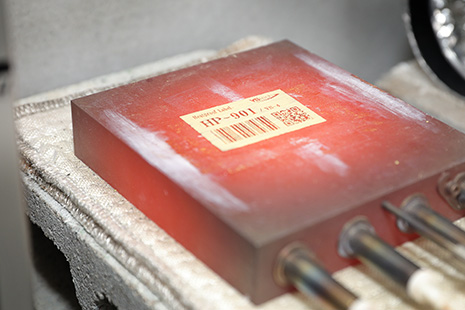
Photo: ISHIZAWA Yoji
In 2004, the company had successfully developed barcode labels able to withstand high temperatures up to 500°C, and the machinery needed to apply them. This system not only facilitates production process management, but is also helpful in managing shipments. For certain customers and products, YStech labels also serve as shipping labels. Conventional shipping labels could not be applied to metal products until the extremely hot material had cooled down. Waiting prolonged periods between processing and applying labels can result in major issues, such as applying labels to the wrong products, or shipping products to incorrect destinations. These mistakes can now be prevented by applying labels during high-temperature processing or immediately after casting. Additionally, unlike handwritten labels, printed labels are not, of course, as readily misread. Moreover, barcode information can be printed on heat-resistant labels using commercially available thermal transfer printers*. Do note, however, that when printing on the company’s heat resistant labels, it is recommended to use ink ribbons designed by YStech, which provide ink that does not burn off when exposed to high temperatures and does not fade when left outdoors for up to a year.
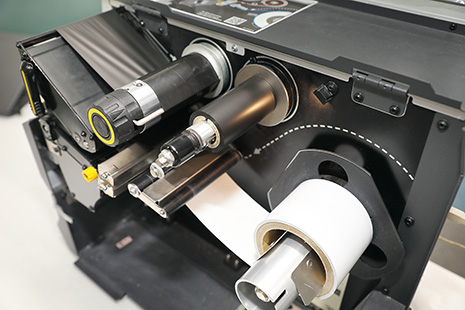
Photo: ISHIZAWA Yoji
As these labels were adopted by more and more manufacturing plants, YStech noticed more diverse needs among their clients. Some customers needed labels that could be used at even higher temperatures; others needed labels that could be heat-treated after being applied at room temperature; still others needed to apply labels to more specialized metals and non-metallic materials.
“Over the past 20 years, we have continued to respond to the needs of various companies by developing products with even greater heat resistance and products that can be used under a range of different conditions. Today, we offer products that can withstand temperatures up to 1,200°C as well. We are the only company in the world with technology that enables labels to be directly applied to objects at such high temperatures."
The recent global trend is toward stronger traceability**, requiring that companies are able to trace raw materials from procurement to production and disposal. Using HEATPROOF not only facilitates traceability, but also shortens production processing times and reduces hazardous operations by eliminating the need for humans to be in hot environments and near hot objects. Recognized for these advantages, HEATPROOF is currently in use in 36 countries and regions around the world.
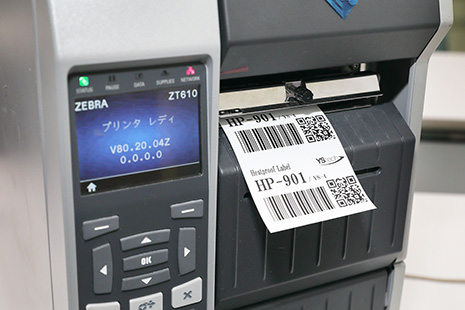
Photo: ISHIZAWA Yoji
“We will continue to work in each region to raise awareness of our products and promote the use of HEATPROOF labels for barcode management,” says OKAYAMA. With an increasing number of customers adopting their products, YStech anticipates strong growth in the future.
Barcodes
A barcode represents information such as the alphabet and numbers using a combination of parallel vertical black lines (bars) and white space. Data is represented by varying line width and spacing, and these labels are used for most manufactured products and commodities. Specialized devices called barcode readers or barcode scanners recognize barcode information and convert it into digital data that can be imported onto computers. While conventional barcodes (1D codes) store information in only one horizontal direction, QR codes and other 2D codes are bidirectional, storing information both vertically and horizontally, to allow large amounts of information to be contained within a small print area.
* A printer that employs a printing method in which ink is transferred via a heated printhead that presses an ink ribbon against paper
** The system for tracking and documenting the processing of goods through all stages from production to consumption
By SAKURAI Yuko
Photo: YStech Co.,Ltd.; ISHIZAWA Yoji

